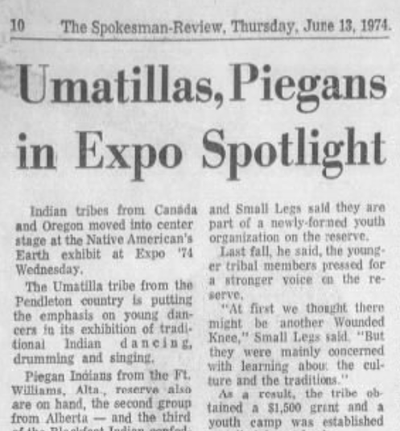This column reflects the opinion of the writer. Learn about the differences between a news story and an opinion column.
50 years ago in Expo history: The fair’s Native American pavilion was proving popular, behind only its Soviet counterpart in interest

The Native American’s Earth pavilion was proving to be one of Expo ’74’s top attractions.
“We were told last week by (Expo general manager) Petr Spurney that the Indian pavilion is running second in audience interest to the Russian pavilion,” said pavilion director Sonny Tuttle. “We had people from all over the world visit our area taking pictures and talking to people.”
The pavilion featured different tribal groups every week. This week, the Umatilla Tribe from Oregon was at center stage, putting on an exhibition of traditional dancing, drumming and singing.
The Piegan tribe from Alberta were also featured during the week.
In other Expo news, the Philippine Pavilion celebrated that country’s Independence Day with a parade through the fairgrounds. Fortuna Marcos Barba, sister of Philippine President Ferdinand E. Marcos, flew in from Manila for the celebration.
From 100 years ago: A former Spokane Daily Chronicle paperboy was one of the heroes in the aftermath of a tragedy on the U.S.S. Mississippi in San Pedro, California.
Ensign Donald H. Smith of Spokane was the first to enter a gun turret after a shell exploded in the breech. He fought his way through the flames in an attempt to rescue the men inside. After his second foray into the turret, he reported the somber news: “All dead.”
Then he went back in three more times to pull the bodies out.
Also on this day
(From onthisday.com)
1920: The U.S. Post Office says children cannot be sent by parcel post (after various instances).